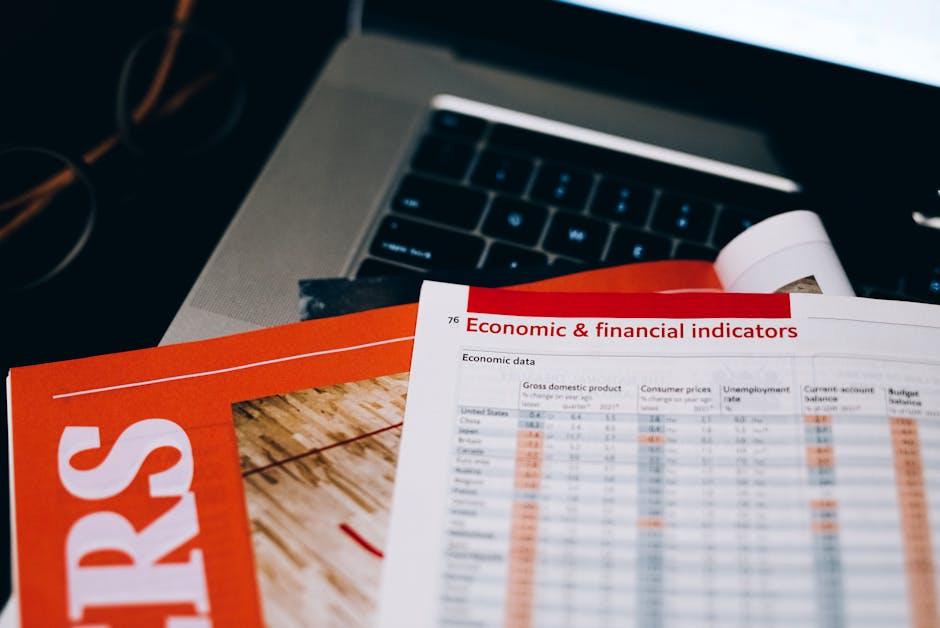In the intricate dance of global finance, where every step is scrutinized and every misstep can lead to chaos, the ability to foresee rising credit risk stands as a beacon of foresight and prudence. As the world economy sways to the unpredictable rhythms of market forces, financial indicators emerge as the silent sentinels, offering crucial insights into the stability of credit landscapes. This article delves into the labyrinth of financial indicators, unraveling the nuanced signals that presage mounting credit risk. With an authoritative lens, we will explore how these indicators, often cloaked in complexity, serve as vital tools for investors, policymakers, and financial institutions alike. Join us as we navigate the corridors of financial data, illuminating the path to understanding and mitigating the potential tremors of credit instability.
Identifying Early Warning Signs in Consumer Credit Trends
Understanding the subtle shifts in consumer credit patterns is crucial for predicting potential financial turbulence. Analyzing credit card delinquencies is a prime indicator; a sudden uptick in missed payments often signals financial strain among consumers. Additionally, credit utilization rates provide valuable insights. A rising trend in these rates can indicate that consumers are relying more heavily on credit, possibly due to insufficient income or savings to cover expenses.
Moreover, pay attention to the volume of new credit inquiries. An increase might suggest that consumers are seeking additional credit lines to manage existing debt, which could lead to a debt spiral if not managed properly. It’s also wise to monitor changes in interest rates, as they can affect borrowing costs and consumer behavior. When these indicators begin to shift, it’s a clarion call for lenders to reassess their risk models and adjust strategies accordingly.

Decoding the Impact of Economic Shifts on Creditworthiness
In an ever-evolving economic landscape, understanding the indicators of rising credit risk is crucial for both lenders and borrowers. As financial markets react to global events, certain patterns emerge that can serve as warning signs. Among these, a sudden spike in interest rates often signals increased borrowing costs, leading to potential repayment challenges. Similarly, a downturn in the housing market can affect asset values, impacting the creditworthiness of those reliant on property as collateral.
- Unemployment Rates: A rise in unemployment often correlates with higher default rates as individuals struggle to meet financial obligations.
- Inflation Trends: Persistent inflation can erode purchasing power, making it harder for consumers to manage debt.
- Corporate Earnings: Declining earnings reports may indicate financial strain, affecting the ability of businesses to honor their debts.
Recognizing these signs early can empower financial institutions to adjust their risk management strategies, ensuring they remain resilient in the face of economic shifts.

Strategies for Mitigating Credit Risk in Volatile Markets
In the face of unpredictable financial landscapes, it’s imperative to adopt a multi-faceted approach to safeguard against potential credit defaults. One effective strategy is to diversify your credit portfolio. By spreading credit exposure across various sectors and geographic regions, you can cushion the impact of localized economic downturns. Regularly reviewing credit ratings and adjusting your portfolio accordingly ensures that you are not overly reliant on high-risk entities.
Another crucial tactic is to implement robust risk assessment models. These models should incorporate both quantitative and qualitative data to provide a comprehensive view of potential risks. Consider the following measures:
- Stress testing: Simulate adverse economic scenarios to evaluate the resilience of your credit portfolio.
- Credit derivatives: Utilize instruments like credit default swaps to hedge against potential losses.
- Covenant monitoring: Ensure that borrowers adhere to agreed-upon financial covenants, signaling early warning signs of financial distress.
By integrating these strategies, you can effectively mitigate credit risk, even in the most volatile market conditions.
Implementing Robust Risk Assessment Tools for Financial Stability
In today’s dynamic financial landscape, understanding the nuances of rising credit risk is crucial for maintaining economic stability. Financial institutions must remain vigilant by closely monitoring key indicators that signal potential threats. Among these, non-performing loans (NPLs) serve as a critical barometer. An uptick in NPLs often suggests that borrowers are struggling to meet their debt obligations, which could foreshadow broader economic challenges. Additionally, credit default swap (CDS) spreads provide insight into market perceptions of credit risk, with widening spreads indicating increased concern over the creditworthiness of borrowers.
Beyond these, financial experts should pay attention to:
- Debt-to-income ratios: Elevated ratios may suggest that consumers and businesses are over-leveraged, increasing the likelihood of default.
- Interest rate trends: Rising rates can exacerbate repayment challenges, especially for variable-rate loans.
- Economic growth forecasts: A downturn in expected growth can lead to reduced income levels, impacting borrowers’ ability to repay.
By integrating these indicators into a comprehensive risk assessment framework, financial institutions can better anticipate and mitigate potential credit risks, thereby safeguarding financial stability.





